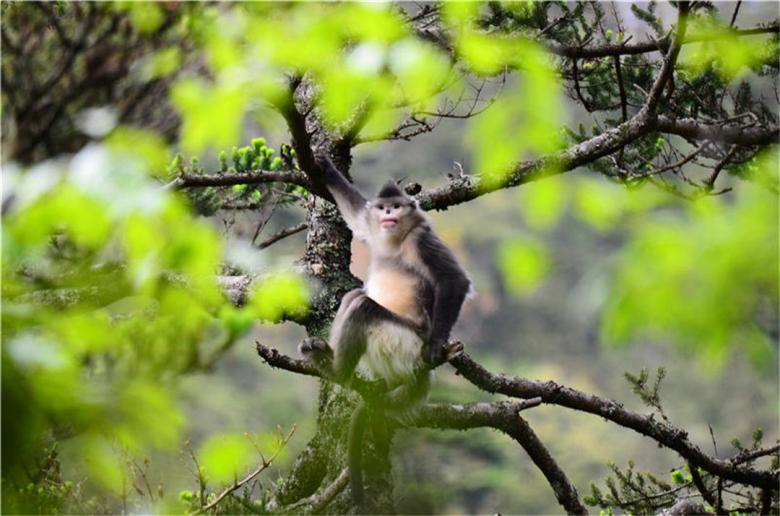
Protecting the beautiful home of the southernmost Yunnan snub-nosed monkey (Rhinopithecus roxellana)
I. Background
The Yunnan snub-nosed monkey (Rhinopithecus roxellana) is a species that mainly occurs in the Yunling Mountains between the Jinsha and Lancang Rivers, with about 3,800 extant individuals. Yunnan Yunlong Tianchi National Nature Reserve, as its southernmost distribution site, is a key area for maintaining the survival space of the species. Historically, the population of Yunnan snub-nosed monkeys in the region has been reduced from four to two populations due to habitat fragmentation, human interference and habitat retreat.
II. Solution Application Approach
1. Standardized monitoring and technology upgrading. Standardize data collection norms: monitor the population 8 days a month, 12 hours a day, recording population size, behavioral rhythms, food habits, etc. to ensure data validity.
Upgrade equipment configuration: Equipped with GPS, infrared cameras, etc. to fill the gap of image records. 5 infrared cameras were installed in the Tianchi population area, successfully obtaining fecal samples and activity traces.
2. Expert team and long-term monitoring system. An inter-agency expert team was formed to solve the problem of insufficient expert guidance in the past.
3. Food resources and habitat management. Establishment of a food resource database: Record the 26 species of plants that the Longma Mountain population feeds on and the seasonal changes in food habits to provide a basis for habitat restoration. Habitat corridor restoration: Prioritize the protection of key vegetation types such as fir forests and Yunnan hemlock forests for the five habitat patches where Longma Mountain populations are active.
4. Man-made disturbance control and community participation. Quantify the types of disturbance: focus on monitoring high-frequency disturbance such as mushroom picking in summer, mark the location of disturbance, and set targeted no-entry periods. Community education: Promote residents’ awareness of conservation and reduce the impact of activities on the monkey population.
Core Challenges
1. Population growth bottleneck: the annual growth rate of Longmashan population has dropped from rapid growth before 2011 to a stable state after 2012, confirming that the habitat is close to the environmental capacity and the habitat quality needs to be optimized.
2. Fragmentation of monitoring data: after standardization, the rate of invalid data has dropped from 53% to a manageable range, and the Tianchi population has moved from “data gaps” to “confirmation of existence”.
3. Threat of man-made disturbance: the intensity of disturbance reached 4.23 in summer, and the seasonal control reduced the stress reaction of the monkey population.
4. Risk of survival of small populations: The survival of the Tianchi population was confirmed for the first time through the deployment of infrared cameras and feces analysis, which provided a basis for the construction of the corridor.
Positive Results
1. Stable population growth: the Longmarsaurus population increased from 127 in 2011 to 190 in 2024, a 49% increase, with a stable population structure, close to the environmental capacity but in dynamic equilibrium.
2. Behavioral and ecological adaptation research: clarify the daily activity rhythms and seasonal dietary changes of Yunnan snub-nosed monkeys, and provide scientific support for food resource management.
3. Synergistic effect between technology and community: standardized monitoring has improved the positioning accuracy of human interference, and community participation has reduced the frequency of interference in summer by 15% year-on-year in 2024, providing a replicable model for similar protected areas.
4. Breakthrough in the protection of small populations: The survival of the Tianchi population has been confirmed through fecal and trace monitoring, and as the southernmost population of the Yunnan snub-nosed monkey, it lays the foundation for the study of species distribution boundaries and habitat corridor planning.
Through the integrated strategy of “scientific monitoring-habitat restoration-community governance”, the program effectively mitigated the threats faced by the Yunnan snub-nosed monkeys, such as stagnant population growth, habitat fragmentation and human interference, and provided a closed-loop management paradigm of “monitoring-assessment-intervention” for the protection of the endangered species. This provides a “monitoring-assessment-intervention” paradigm for endangered species conservation.

